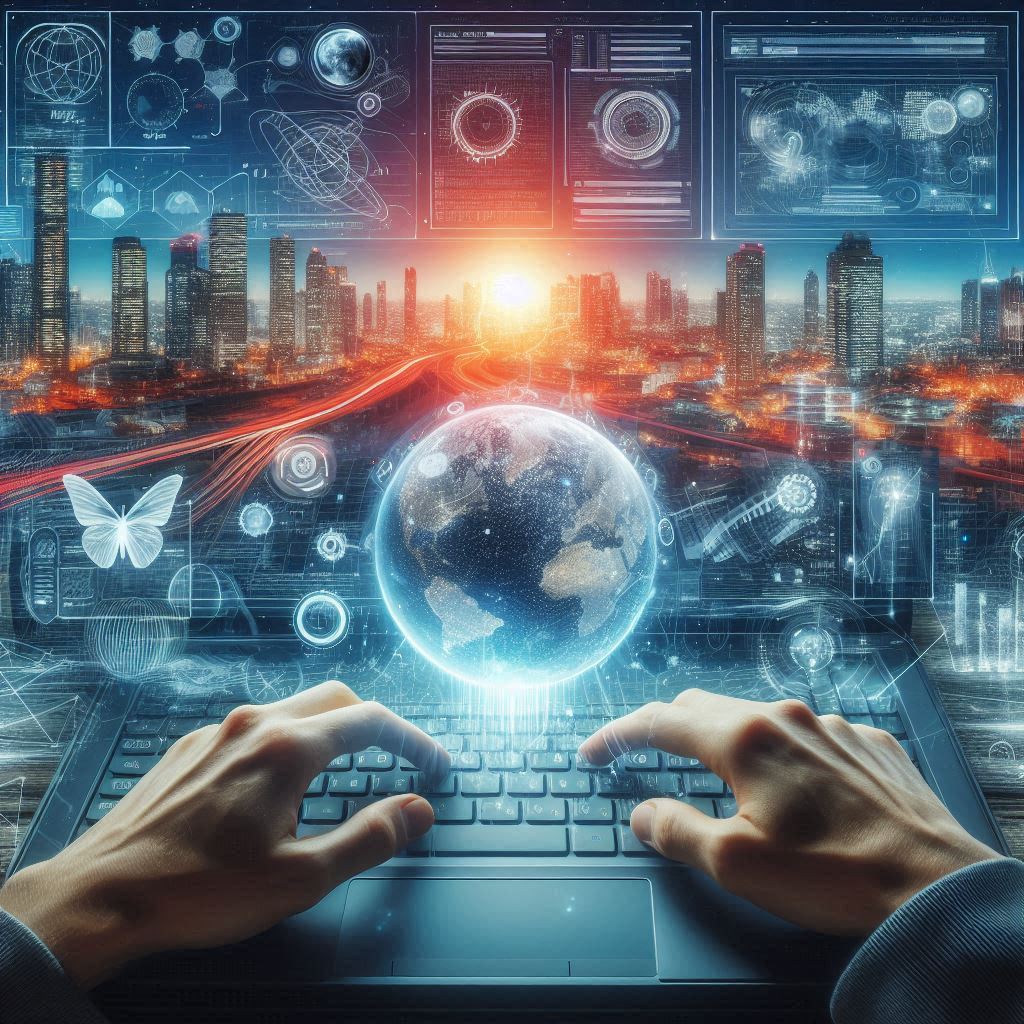Introduction
The software development landscape is constantly evolving, driven by rapid advancements in technology and changing market demands. Staying informed about the latest trends is crucial for developers, businesses, and tech enthusiasts to remain competitive and innovative. This blog explores the key trends shaping the future of software development and highlights the technologies and practices that are set to transform the industry.
Thank you for reading this post, don't forget to subscribe!1. Artificial Intelligence and Machine Learning
AI-Driven Development
Artificial Intelligence (AI) and Machine Learning (ML) are revolutionizing software development by automating complex tasks and enhancing decision-making processes. AI-driven development tools can generate code, identify bugs, and optimize performance, making the development process faster and more efficient.
Examples:
- GitHub Copilot: An AI-powered code completion tool that suggests code snippets and entire functions as you type.
- TabNine: An AI assistant that provides intelligent code completions based on your coding style.
Integration in Applications
AI and ML are being integrated into various applications to provide personalized experiences, automate processes, and improve data analysis. From chatbots to predictive analytics, AI-powered features are becoming standard in modern software solutions.
Examples:
- Chatbots: AI-driven chatbots provide 24/7 customer support, enhancing user experience and reducing operational costs.
- Predictive Analytics: ML algorithms analyze data patterns to predict future trends and inform business decisions.
2. Low-Code and No-Code Development
Democratizing Software Development
Low-code and no-code platforms enable users with little to no programming experience to create applications through visual interfaces and drag-and-drop components. This democratizes software development, allowing more people to participate in creating digital solutions.
Examples:
- OutSystems: A low-code platform that allows developers to build and deploy applications quickly.
- Bubble: A no-code platform for building web applications without writing code.
Accelerating Development Cycles
These platforms significantly reduce development time and costs, making it easier for businesses to innovate and adapt to market changes. They are particularly useful for prototyping, internal tools, and customer-facing applications.
Examples:
- Appgyver: A no-code platform that accelerates the development of mobile and web apps.
- Mendix: A low-code platform that facilitates rapid application development and deployment.
3. DevOps and Continuous Integration/Continuous Deployment (CI/CD)
Enhancing Collaboration
DevOps practices foster collaboration between development and operations teams, breaking down silos and streamlining workflows. This approach leads to more efficient and reliable software delivery.
Examples:
- Jenkins: An open-source automation server that supports CI/CD and automates the software development process.
- GitLab CI/CD: A built-in feature of GitLab that automates testing and deployment, ensuring continuous delivery of high-quality code.
Automation and Monitoring
CI/CD pipelines automate the building, testing, and deployment of code, enabling faster and more frequent releases. Monitoring tools provide real-time insights into application performance, helping teams quickly identify and resolve issues.
Examples:
- CircleCI: A CI/CD tool that automates the development process and provides insights into build performance.
- New Relic: A monitoring tool that offers real-time analytics and alerts for application performance.
4. Cloud-Native Development
Microservices Architecture
Cloud-native development involves building applications that leverage cloud computing principles, such as scalability, flexibility, and resilience. Microservices architecture, which decomposes applications into small, loosely coupled services, is a key component of this approach.
Examples:
- Kubernetes: An open-source platform for automating the deployment, scaling, and management of containerized applications.
- Docker: A tool that enables developers to create, deploy, and run applications in containers.
Serverless Computing
Serverless computing allows developers to build and run applications without managing the underlying infrastructure. This approach reduces operational overhead and scales automatically based on demand.
Examples:
- AWS Lambda: A serverless computing service that runs code in response to events and automatically manages the underlying infrastructure.
- Azure Functions: A serverless compute service that enables developers to run event-driven code without provisioning or managing servers.
5. Blockchain Technology
Decentralized Applications (DApps)
Blockchain technology is enabling the development of decentralized applications (DApps) that operate on a peer-to-peer network, offering increased security, transparency, and trust.
Examples:
- Ethereum: A decentralized platform that enables developers to build and deploy smart contracts and DApps.
- Hyperledger Fabric: An open-source blockchain framework for developing enterprise-grade DApps.
Smart Contracts
Smart contracts are self-executing contracts with the terms directly written into code. They facilitate, verify, and enforce the negotiation or performance of a contract, reducing the need for intermediaries.
Examples:
- Solidity: A programming language for writing smart contracts on the Ethereum blockchain.
- Chainlink: A decentralized oracle network that connects smart contracts with real-world data.
6. Cybersecurity and Privacy
Built-In Security
As cyber threats continue to evolve, integrating security into the software development lifecycle is becoming increasingly important. Security practices such as threat modeling, secure coding, and automated security testing are essential for protecting applications and data.
Examples:
- Snyk: A tool that automatically detects and fixes vulnerabilities in code, dependencies, and container images.
- Veracode: A platform that provides automated security testing and vulnerability management for applications.
Privacy by Design
Privacy by design is a proactive approach that incorporates privacy principles into the design and architecture of software systems. This approach ensures that user data is protected and compliance with privacy regulations is maintained.
Examples:
- GDPR Compliance: Implementing features and practices that ensure compliance with the General Data Protection Regulation (GDPR).
- Data Masking: Techniques that protect sensitive data by obscuring it with fictional data.
7. Edge Computing
Processing at the Edge
Edge computing involves processing data closer to the source, rather than relying on a centralized cloud server. This approach reduces latency, improves performance, and enables real-time processing for IoT devices and other applications.
Examples:
- AWS IoT Greengrass: A service that extends AWS cloud capabilities to local devices, allowing them to act locally on the data they generate.
- Microsoft Azure IoT Edge: A platform that brings cloud intelligence to edge devices.
Applications in IoT
Edge computing is particularly beneficial for Internet of Things (IoT) applications, where real-time data processing is critical. It enables faster decision-making and reduces the bandwidth required for transmitting data to the cloud.
Examples:
- Smart Cities: Implementing edge computing in smart city applications to process data from sensors and devices in real-time.
- Industrial IoT: Using edge computing to monitor and control industrial equipment for improved efficiency and safety.
FAQs
What are the key trends in software development?
Key trends include AI and ML, low-code and no-code development, DevOps and CI/CD, cloud-native development, blockchain technology, cybersecurity and privacy, and edge computing.
How is AI transforming software development?
AI is automating complex tasks, enhancing decision-making processes, and enabling the development of intelligent applications that provide personalized experiences and improved data analysis.
What is the impact of low-code and no-code platforms?
Low-code and no-code platforms democratize software development, allowing users with little to no programming experience to create applications. They accelerate development cycles and reduce costs.
Why are DevOps and CI/CD important?
DevOps and CI/CD practices enhance collaboration, streamline workflows, and automate the software delivery process, leading to more efficient and reliable software releases.
What is cloud-native development?
Cloud-native development involves building applications that leverage cloud computing principles, such as scalability, flexibility, and resilience. It often includes microservices architecture and serverless computing.
How does edge computing benefit IoT applications?
Edge computing reduces latency, improves performance, and enables real-time data processing, making it ideal for IoT applications where timely decision-making is critical.
Conclusion
The future of software development is being shaped by exciting trends and emerging technologies that promise to transform the industry. From AI and low-code platforms to DevOps and edge computing, these advancements offer new opportunities for innovation, efficiency, and scalability. By staying informed and adapting to these trends, developers and businesses can remain competitive and drive the next generation of software solutions. Embrace these trends and be part of the future of software development.



